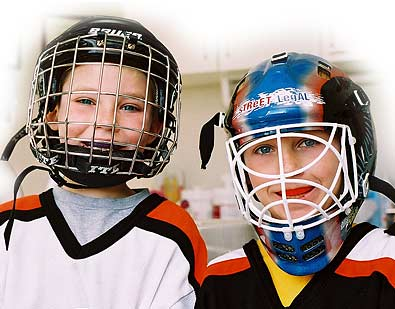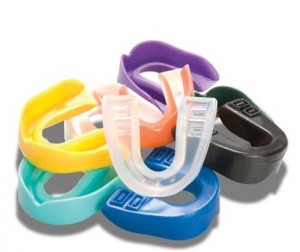April 27th, 2015
 Did you know that through proper orthodontic elastic wear you're helping both your treatment progress and helping save the Southern Bald Eagle, Gray Wolfe and other endangered animals?
Did you know that through proper orthodontic elastic wear you're helping both your treatment progress and helping save the Southern Bald Eagle, Gray Wolfe and other endangered animals?
Elastics (a.k.a. rubber bands) provide a gentle but continuous force to help individual tooth movement or the aligning of one arch to the other and are used periodically throughout orthodontic treatment.
 Dr. Godwin and the team at Bel Air Orthodontics use the "Wildlife Series" elastics manufactured by American Orthodontics who contributes to the World Wildlife Fund. By faithfully wearing your elastics, you'll be doing your part in preserving and protecting endangered and threatened animals all over the world. This additional incentive may be just the motivator you need to wear elastics as prescribed!
Dr. Godwin and the team at Bel Air Orthodontics use the "Wildlife Series" elastics manufactured by American Orthodontics who contributes to the World Wildlife Fund. By faithfully wearing your elastics, you'll be doing your part in preserving and protecting endangered and threatened animals all over the world. This additional incentive may be just the motivator you need to wear elastics as prescribed!
To learn more about the World Wildlife Fund Program, visit their website.
April 6th, 2015
 April is National Facial Protection Month, and Dr. Stephen Godwin and the team at Bel Air Orthodontics want to remind parents, coaches and athletes to play it safe as they prepare to suit up for recreational and organized sports. Whether at practice, at a game, or simply enjoying some fun in the neighborhood, a sports-related injury can happen in an instant. That's why it's important to take precautions to protect your face and teeth from injury. Dr. Godwin suggests that you take these simple steps to prevent injuries so you can stay in the game:
April is National Facial Protection Month, and Dr. Stephen Godwin and the team at Bel Air Orthodontics want to remind parents, coaches and athletes to play it safe as they prepare to suit up for recreational and organized sports. Whether at practice, at a game, or simply enjoying some fun in the neighborhood, a sports-related injury can happen in an instant. That's why it's important to take precautions to protect your face and teeth from injury. Dr. Godwin suggests that you take these simple steps to prevent injuries so you can stay in the game:
- Wear a mouthguard when playing contact sports; if you are wearing braces, make sure you use a mouthguard designed specially for orthodontic patients;
- Wear a helmet. Helmets reduce the risk of head injury by absorbing the energy of an impact.
- Wear protective eye wear. According to the Coalition to Prevent Sports Eye Injuries, protective eye wear designed specifically for the sport can prevent more than 90 percent of all eye injuries.
- Wear a face shield to avoid scratched or bruised skin;
- Be alert - as a player or spectator!
 Did You Know? . . .
Did You Know? . . .
Athletes who don't wear mouthguards are 60 times more likely to damage their teeth;
Sports-related injuries are the leading cause of emergency room visits in children ages 12 to 17 according to the Center for Disease Control.
Whatever your sport, the right protective gear can save your teeth, your face, even your life. If you or your child suffers dental trauma such as a knocked-out or broken tooth, Dr. Godwin suggest that you contact your dentist for immediate attention. For those in braces, it's also important to contact our office to schedule an appointment for repair since damage to braces can lengthen treatment time and affect treatment results.
About National Facial Protection Month: Every April, the American Association of Orthodontists, the American Dental Society, the Academy for Sports Dentistry, the American Association of Oral and Maxillofacial Surgeons, and the American Academy of Pediatric Dentistry team up to remind parents and parents, coaches and athletes about the importance of taking precautions to preserve their teeth and protect them from facial injuries.
March 27th, 2015
 You may be wondering why Dr. Godwin and the team at Bel Air Orthodontics work tirelessly to give our patients straight teeth. While it's no secret that everyone wants a great smile, you may be surprised to learn that straightening your teeth can offer so many more benefits.
You may be wondering why Dr. Godwin and the team at Bel Air Orthodontics work tirelessly to give our patients straight teeth. While it's no secret that everyone wants a great smile, you may be surprised to learn that straightening your teeth can offer so many more benefits.
Straight Teeth Are Healthier Teeth
Straight teeth are easier to keep clean which leads to better oral hygiene, fewer cavities, and healthier gums. A healthier smile also means a healthier bite. When you upper and lower teeth fit together the way the should, it's easier to bite, chew and speak. Various bite problems from overbite to underbite can cause excessive wear of your teeth and possible jaw joint problems. Correcting these orthodontic problems can prevent decay, gum disease and even tooth loss.
Improve Your Smile - Improve Your Self Esteem
Your smile is your greeting to the world, but not everyone is born with beautiful, straight teeth. Misaligned, crooked and crowded teeth may be a source of embarrassment or self-consciousness for some people. The good news is that orthodontic treatment can correct these problems which can give you self-esteem and confidence that comes with straight teeth and a healthy smile.
Appearance Does Matter
Truth be told, appearance does matter. Studies have proven over and over again that a great smile can literally change how you feel about yourself and how people see you - at work and in your personal life. People with straight, healthy teeth demonstrate high self-esteem and confidence and this comes through to everyone they meet. Like it or not, your smile is a reflection of you.
To see how much better your smile can be, contact the team at Bel Air Orthodontic for a complimentary initial exam. We offer a variety of treatment options that can give you the smile you've always wanted.
March 17th, 2015
 Lucky green shamrocks, leprechauns, and pots of gold - it must be St. Patrick's Day! If you're not Irish, how do you go about celebrating St. Patrick's Day? It's easy . . . You just put on one of those tall leprechauns hats, dress in green from head to toe, and wear one of those carefree pins that say, "Kiss Me, I'm Irish." On St. Patrick's Day, everyone is Irish, and that is the universal beauty of the holiday. Celtic pride does not discriminate.
Lucky green shamrocks, leprechauns, and pots of gold - it must be St. Patrick's Day! If you're not Irish, how do you go about celebrating St. Patrick's Day? It's easy . . . You just put on one of those tall leprechauns hats, dress in green from head to toe, and wear one of those carefree pins that say, "Kiss Me, I'm Irish." On St. Patrick's Day, everyone is Irish, and that is the universal beauty of the holiday. Celtic pride does not discriminate.
All kidding aside, St. Patrick's Day is an important cultural and religious holiday. There are lavish parades and church services across Ireland on March 17th. Over time, however, the holiday has developed into a day to observe Irish culture in general. In places like England and the United States, where there is a large Irish Diaspora, the holiday has greater significance than other countries. From the streets of Boston to St. Patrick's Cathedral in New York, it is a day of celebration, and many Americans of Irish decent will celebrate with their friends and family by cooking up a traditional meal of corned beef and cabbage.
So, to all of you with Irish ancestry, and to all of you who have decided to be Irish for the day, Dr. Godwin and the team at Bel Air Orthodontics wish you a Happy St. Patrick's Day. May the luck of the Irish be with you!
 Did you know that through proper orthodontic elastic wear you're helping both your treatment progress and helping save the Southern Bald Eagle, Gray Wolfe and other endangered animals?
Did you know that through proper orthodontic elastic wear you're helping both your treatment progress and helping save the Southern Bald Eagle, Gray Wolfe and other endangered animals? Dr. Godwin and the team at Bel Air Orthodontics use the "Wildlife Series" elastics manufactured by American Orthodontics who contributes to the World Wildlife Fund. By faithfully wearing your elastics, you'll be doing your part in preserving and protecting endangered and threatened animals all over the world. This additional incentive may be just the motivator you need to wear elastics as prescribed!
Dr. Godwin and the team at Bel Air Orthodontics use the "Wildlife Series" elastics manufactured by American Orthodontics who contributes to the World Wildlife Fund. By faithfully wearing your elastics, you'll be doing your part in preserving and protecting endangered and threatened animals all over the world. This additional incentive may be just the motivator you need to wear elastics as prescribed!



